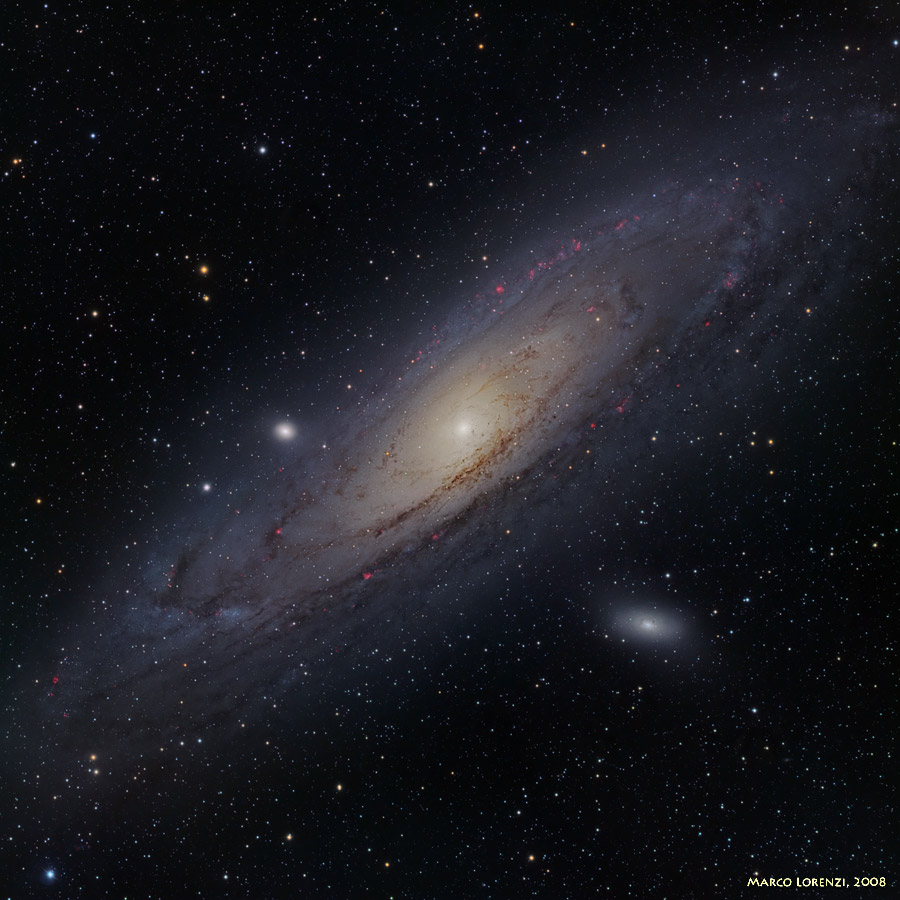
M31 Andromeda Galaxy
Field centered on R.A. 00h 42' & Dec. +41° 20'

The most distant object easily visible to the unaided eye is M31, the great Andromeda Galaxy some two and a half million light-years away. But without a telescope, even this immense spiral galaxy - spanning over 200,000 light years - appears as a faint, nebulous cloud in the constellation Andromeda. In contrast, a bright yellow nucleus, dark winding dust lanes, gorgeous blue spiral arms and star clusters are recorded in this telescopic digital image. While even casual skygazers are now inspired by the knowledge that there are many distant galaxies like M31, astronomers seriously debated this fundamental concept less than 90 years ago. Were these "spiral nebulae" simply outlying components of our own Milky Way Galaxy or were they instead "island universes" -- distant systems of stars comparable to the Milky Way itself? This question was central to the famous Shapley-Curtis debate of 1920, which was later resolved by observations of M31 in favor of Andromeda, island universe (text adapted from APOD). |
Instrument: |
CCD: |
Exposition: |
Filter: |
Site: |
Author: |
| Apo TEC140 (140/f7) + AP MACH1 | FLI Proline 16803, binning 1x1, T=-30°C | Ha (180m) L (150m) R (45m) G (45m) B (45m) | Astrodon Ha LRGB Gen 2 filter set | Gambugliano, Italy |
M.Lorenzi |
All of the photographs and text on these pages are copyrighted by Marco Lorenzi.
They may not be reproduced, published, copied or transmitted
in any form, including electronically on the Internet or World Wide
Web, without written permission of the author. |